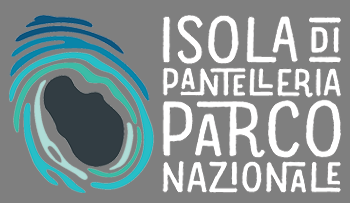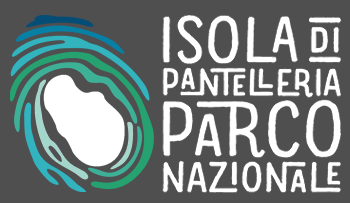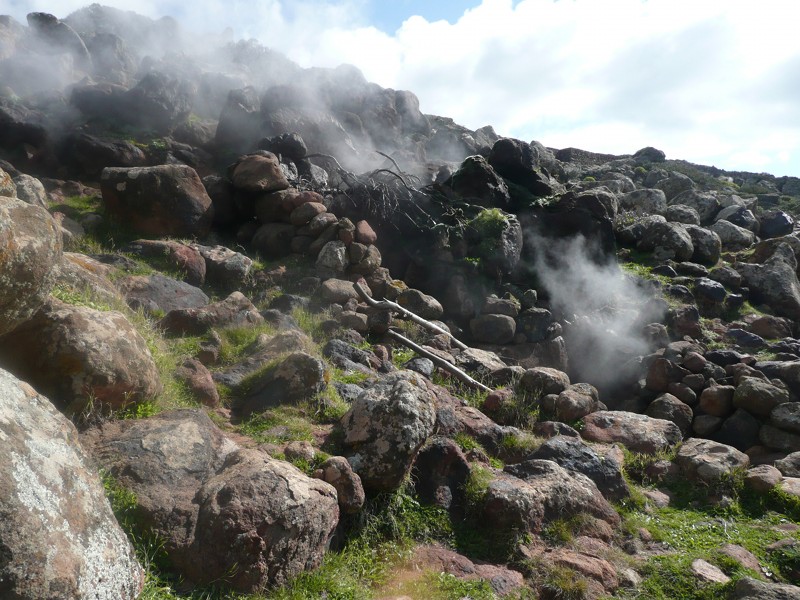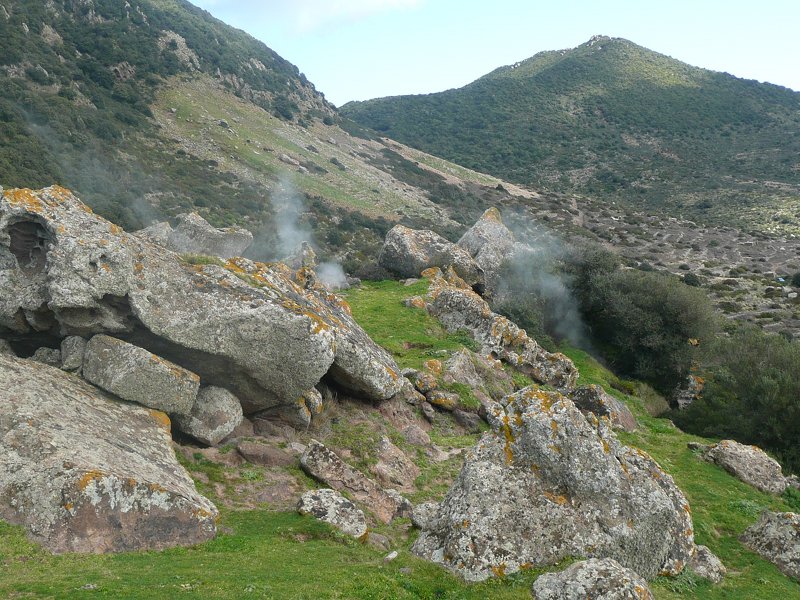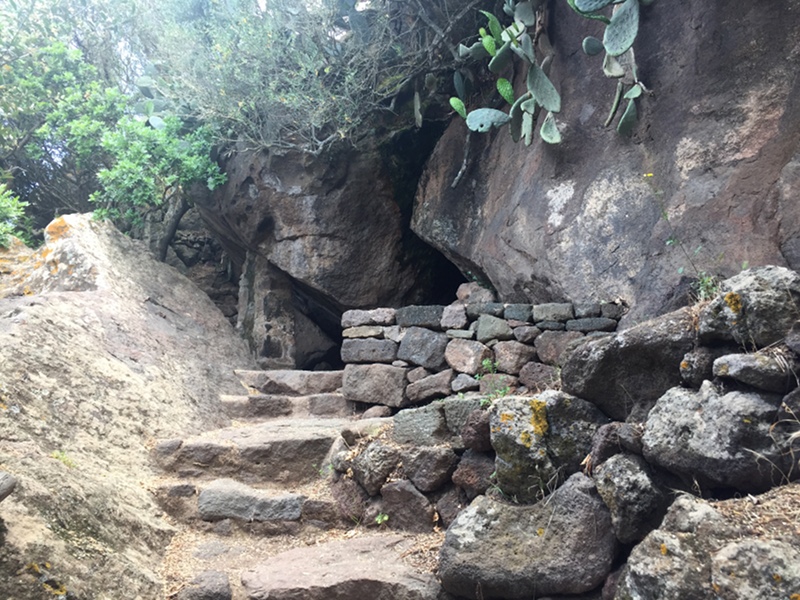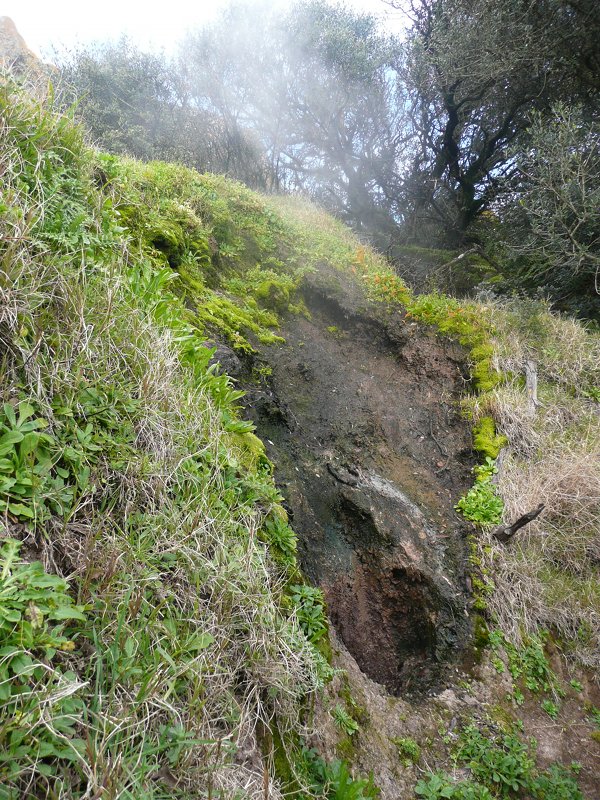- Producers of typical products
- Forum
- Environmental Education
- The Authorities
- Organization and Offices
- Council Notice Board
- Transparent Administration
- Reference Legislation
- Regulations in force
- The plan of the Park
- Consultation of deliberative acts
Home » Natural landscape
Volcanism
The island of Pantelleria represents the emerging point of a volcanic complex of which about 28% has emerged, while the remaining 72% is located below sea level, up to a depth of about 1200 m. The birth of the volcano is linked to the formation of a vast area of relaxation in the Sicily Strait with a NO-SE trend. This distension process is called "rifting", active since the Late Miocene and accompanied by a widespread volcanic activity mainly concentrated in the NW area of the Sicily Strait.
The erupted material is made up of basic vulcanites (basanites, basalts with different degrees of alkalinity -tholeiitic, tranitional, - alkaline, and hawaiiti) and acid (Na-trachytes and Na-riolites or pantellerites). Therefore, there are extremely different types of rocks without, or almost, products with intermediate chemistry. This is one of the reasons why the island of Pantelleria has had, and continues to have, a high interest for geologists, in particular for the petrologists who try to establish whether the two types of rocks (basic and acidic) are related to each other from processes of differentiation and if these processes involve one or more types of magmas.
Pantelleria is in effect an active volcanic complex. The last episode of eruptive activity, a submarine eruption, occurred in 1891 at 5 Km north-west with respect to the Port of Pantelleria, demonstrating that the primary volcanic activity is located in the submerged portion of the Volcanic Complex.
The formation process of the Island of Pantelleria can be schematically divided into three periods: from 320,000 to 180,000 years ago; from 180,000 to 45,000 years ago; from 45,000 to 7,000 ago. This last period began with the deposition of the "Green Tufo" (about 45,000 years ago) and ended with the casting of the Khaggiár spilled from the eruptive centre of Kúddia Randázzo, this would be the last eruption of the emerged sector of the Island (about 7000 years ago).
Today, the volcanism in the emerged sector manifests itself as secondary activities such as the fumaroles and the hydrothermal hot springs, present all over the island, but located mainly in correspondence with the local volcano-tectonic lines. For this reason, Pantelleria can be considered an open-air spa. On the island there are numerous phenomena of the so-called secondary volcanism: marine geothermal springs, natural cave saunas, fumaroles, terrestrial geothermal sources in the Venere Lake. Some of these places are considered geosites (Administrative Decree No. 283 of 29 August 2017 "Istituzione dei Geositi ricadenti in aree di riserva naturale per motivi geologici" and integration of Annex 1 in the Administrative Decree No. 283/17 with Administrative Decre No. 349 of 05 October 2017):
- "Favara Grande" Geosite
- "Fumarole della Vecchia Caserma" Geosite
- "Monte Gibele" Geosite
- "Specchio di Venere" Geosite.
As regards the other activities of secondary volcanism of particular relevance, it is worth mentioning:
- Niká
- Sataría Cave
- Gadír
- Benikulá Cave (U Vágnu Sciúttu).
Among the geothermal springs, Niká stands out, one of the most fascinating places in terms of thermalism on Pantelleria. It is a descent to the sea, located in the southern part of the island, famous for a small cove below the ridge from which hot water comes out. Reachable from the mainland or from the sea, the water temperature gradually rises to over 40 ° C. This happens because from the inlet under the ridge a spring of thermal water gushes out, whose temperature is around between 85 and 100 ° C and that, mixing itself with that of sea, reaches 70 ° C. Small natural tanks in which flows the thermal water and bounded by rocks on which sulphur is deposited, incrustation of hydrated silica and alum, allow everyone to dive and enjoy its therapeutic virtues.
Very well known since ancient times is the Sataría cave for the quality of its thermal waters. Inside it springs hot water at a temperature of about 40 ° C that flow into three tanks. The name Sataría comes from the Greek "Soterìa" and means cave of health.
Gadír is one of the most well-known districts of the island, a fishing village with a slipway for boats. Until the 1960s, the area was rich in buvíre (freshwater wells) used in the past to supply passing ships and is still characterized by the presence of thermal baths of different sizes and temperatures. A similar situation is present at the Scalo of Scauri, where the Phoenician port is located.
In the district of Sibá, in the Benikulá locality, along the ridge of Montagna Grande there is a natural cave open in a large fault and divided, since ancient times, into two rooms: the first external, the "frigidarium", with the view on the great Monastero plain, surrounded by the typical dukkéne (stone seats), and the smaller inner one where water vapor reaches about 38 ° C. This emission is used as a real natural sauna by Pantelleria inhabitants and tourists to treat rheumatic pains.
© 2024 - Ente Parco Nazionale Isola di Pantelleria
Via San Nicola, 5 - 91017 Pantelleria (TP)
Tel +39 0923/569412 - Email: info@parconazionalepantelleria.it - protocollo@pec.parconazionalepantelleria.it
Codice fiscale: 93077090814
